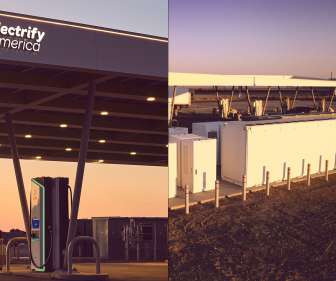Electrify America unveils its first application of megawatt-level energy storage
Green Car Congress
OCTOBER 20, 2022
They have some of the fastest charging speeds available today at up to 350 kW (Hyper-Fast), depending on the charger. For example, at 350kW, capable EVs can recharge up to about 20 miles of driving range per minute of charging. The expansion at Baker also adds four new individual chargers, bringing the total to twelve.















Let's personalize your content